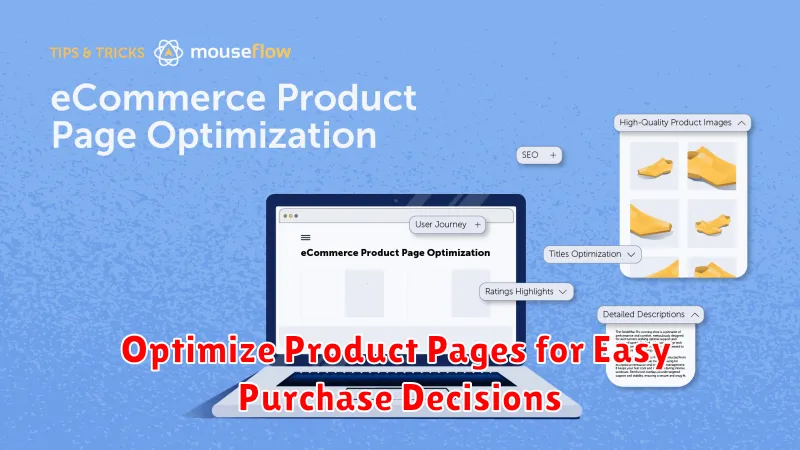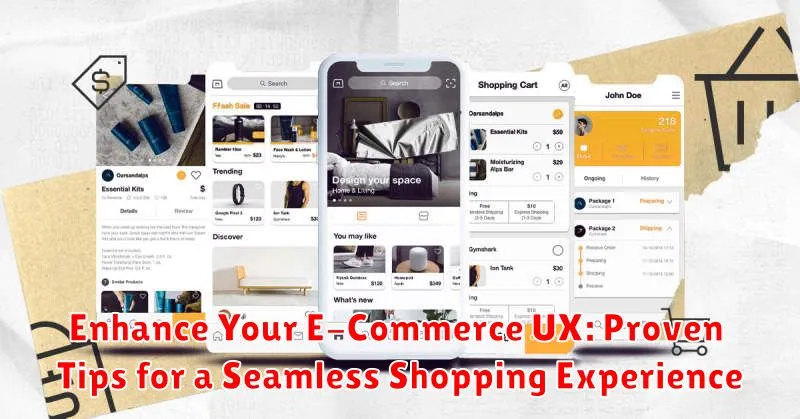In today’s competitive digital landscape, a seamless and engaging user experience (UX) is paramount to the success of any e-commerce venture. A positive UX not only drives conversions and boosts sales but also fosters customer loyalty and establishes a strong brand presence. This article delves into proven tips and best practices to enhance your e-commerce UX, ensuring a seamless shopping experience that keeps customers coming back for more. We will explore key areas such as website navigation, product discovery, and the checkout process, offering actionable insights to optimize each stage of the customer journey.
From streamlined navigation and intuitive search functionality to persuasive product presentations and a frictionless checkout, every element of your e-commerce platform contributes to the overall user experience. By focusing on user-centric design and implementing these proven strategies, you can significantly improve customer satisfaction, reduce cart abandonment rates, and ultimately, enhance your e-commerce success. This guide will equip you with the knowledge and tools to create a truly seamless shopping experience that sets your business apart from the competition and cultivates lasting customer relationships.
Streamline Your Navigation for Effortless Browsing
Intuitive navigation is paramount to a positive user experience. Customers should be able to easily find what they’re looking for without any confusion. A well-structured navigation system reduces bounce rates and encourages product discovery.
Organize your products into logical categories and subcategories. A clear hierarchy makes browsing straightforward and prevents users from feeling lost. Consider using mega menus for larger catalogs, allowing customers to preview multiple subcategories at a glance. This reduces clicks and speeds up the browsing process.
Breadcrumbs are essential for showing users their current location within the site. They provide context and facilitate easy backtracking. Implement clear breadcrumbs on every page to enhance navigation and improve the overall user experience.
A prominent and easy-to-use search bar is crucial, but its implementation will be discussed in a separate section.
Optimize Product Pages for Easy Purchase Decisions

Product pages are the heart of your e-commerce store. High-quality images are essential. Showcase your products from multiple angles and consider incorporating zoom functionality for detailed views. Compelling product descriptions should highlight key features and benefits, addressing customer needs and pain points.
Clear and concise pricing information is crucial. Display the price prominently, along with any applicable discounts or promotions. Customer reviews and ratings build trust and social proof, encouraging purchasing decisions. Feature authentic reviews to showcase product value.
Streamlined add-to-cart functionality is essential. A prominent and easily accessible “Add to Cart” button minimizes friction in the purchasing process. Related product recommendations can increase average order value by suggesting complementary items or alternatives. Present these recommendations strategically to avoid overwhelming the customer.
Size guides and other pertinent information, such as material composition or care instructions, should be readily available to preemptively answer customer questions and reduce purchase hesitation.
Create a Mobile-First Experience for On-the-Go Shoppers
In today’s fast-paced world, mobile commerce is king. A mobile-first approach is no longer a luxury, but a necessity for e-commerce success. This means designing your online store with mobile users as the primary focus, ensuring a seamless and enjoyable shopping experience on smaller screens.
Responsive design is crucial. Your website should adapt flawlessly to various screen sizes, from smartphones to tablets. Elements should resize and rearrange dynamically, maintaining readability and usability without requiring users to zoom or scroll excessively.
Simplify the checkout process on mobile. Minimize the number of steps and form fields required to complete a purchase. Offer guest checkout options to reduce friction for new customers. Consider integrating mobile wallets like Apple Pay or Google Pay for a faster and more convenient payment experience.
Touch-friendly interfaces are essential. Buttons and interactive elements should be large enough to tap comfortably with a finger. Navigation should be intuitive and easy to use with one hand. Avoid cluttered layouts and ensure sufficient spacing between elements.
Implement a User-Friendly Search Bar
A prominent, intuitive search bar is crucial for a positive user experience. Placement is key; ensure it’s easily visible at the top of every page. Functionality is equally important. The search bar should offer autocomplete suggestions as the user types, minimizing effort and guiding them towards relevant products.
Consider incorporating advanced search filters. This allows customers to narrow down results based on specific criteria like price, size, color, or brand. Providing clear filtering options empowers users to quickly find exactly what they’re looking for.
Handling typos is also essential. Implement a “did you mean” feature to catch common spelling errors and offer corrected suggestions. This prevents frustration and keeps customers on track. Testing your search bar rigorously with various search terms is vital to ensure its effectiveness and identify areas for improvement.
Personalize the Shopping Journey
In today’s competitive e-commerce landscape, personalization is key to enhancing user experience and fostering customer loyalty. By tailoring the shopping journey to individual preferences, you can significantly increase conversions and create a more engaging experience.
Product Recommendations are a powerful personalization tool. By analyzing browsing history and purchase patterns, you can suggest relevant products that customers are likely to be interested in. This not only increases sales but also provides a more convenient shopping experience.
Targeted Promotions based on individual customer segments can be highly effective. Offering discounts on products that align with a customer’s interests makes them feel valued and encourages repeat purchases.
Personalized Content, such as curated product collections or customized landing pages, creates a more relevant and engaging experience. Addressing customers by name and acknowledging their past interactions can also add a personal touch.
Offer Convenient Payment Options
A key aspect of a positive user experience is offering a variety of payment methods. Customers appreciate the flexibility to choose their preferred way to pay. Supporting major credit cards like Visa, Mastercard, and American Express is essential.
Consider incorporating digital wallets such as Apple Pay, Google Pay, and PayPal for added convenience. These options streamline the checkout process, reducing the need for manual data entry.
Offering alternative payment solutions like buy now, pay later (BNPL) services can attract a wider customer base. This allows customers to split their purchases into smaller, more manageable payments, increasing affordability.
Ensure your payment gateway is mobile-friendly. A significant portion of online shopping occurs on mobile devices, so a smooth and responsive mobile payment experience is crucial.
Build Trust with Secure Checkout
A secure checkout process is crucial for building trust and encouraging customers to complete their purchases. Displaying security badges, such as SSL certificates and trusted payment provider logos, can instantly reassure customers that their information is safe.
Clearly communicate your security measures. Explain how customer data is encrypted and protected. Transparency builds confidence. Consider offering multiple payment gateways to cater to different customer preferences and increase flexibility. Popular options include credit/debit cards, digital wallets, and perhaps even buy now, pay later services.
Simplify the checkout process. Minimize the number of steps required to complete a purchase. A lengthy or complicated checkout can lead to cart abandonment. Ensure forms are easy to fill out and clearly indicate required fields.
Provide Excellent Customer Service
Exceptional customer service is paramount to a positive e-commerce experience. Customers encountering issues or having questions expect prompt and helpful support. This can significantly impact their satisfaction and likelihood of returning.
Offer multiple channels for customer support, such as live chat, email, and phone. Live chat offers immediate assistance, while email provides a record of communication. Phone support, while sometimes less preferred by younger demographics, offers a personal touch for complex issues.
Ensure your customer service representatives are well-trained and empowered to resolve customer issues effectively. Provide them with the resources and information necessary to handle a variety of situations. A knowledgeable and helpful support team can turn a negative experience into a positive one.
Consider a comprehensive FAQ section on your website to address common questions and concerns. This can significantly reduce the volume of support requests and provide customers with immediate answers.
Gather User Feedback and Iterate

Continuous improvement is key to a successful e-commerce UX. Actively soliciting and analyzing user feedback provides invaluable insights into pain points and areas for optimization.
Implement various feedback mechanisms, such as on-site surveys, feedback forms, and customer support interactions. Analyze this data to identify recurring issues and prioritize improvements.
A/B testing is a powerful tool to validate design changes. By comparing different versions of elements like call-to-action buttons or product page layouts, you can determine which performs best based on user behavior. Track key metrics like conversion rates and bounce rates to make data-driven decisions.
Iterate based on your findings. Don’t be afraid to make adjustments to your website based on user feedback and A/B testing results. This iterative process is essential for continually refining the user experience and maximizing conversions.

